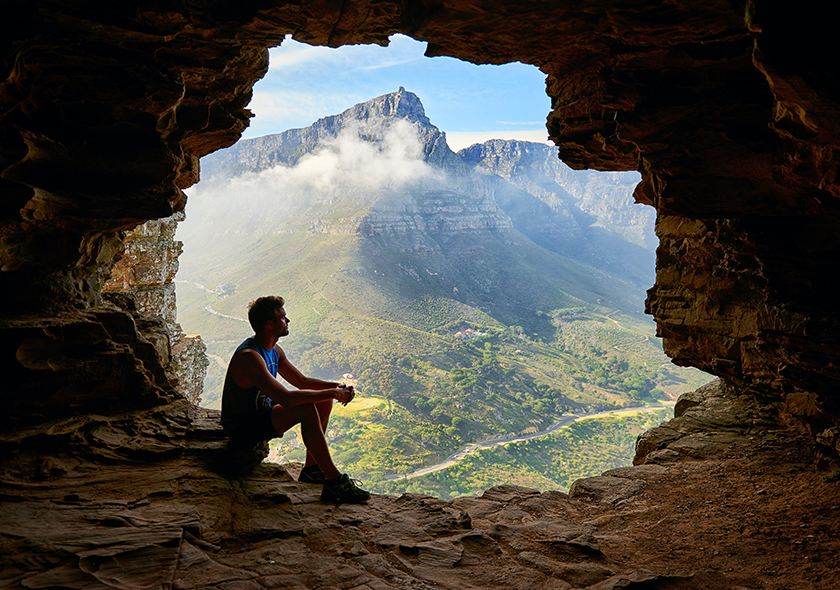Top 10 Most Beautiful Caves in India in 2025
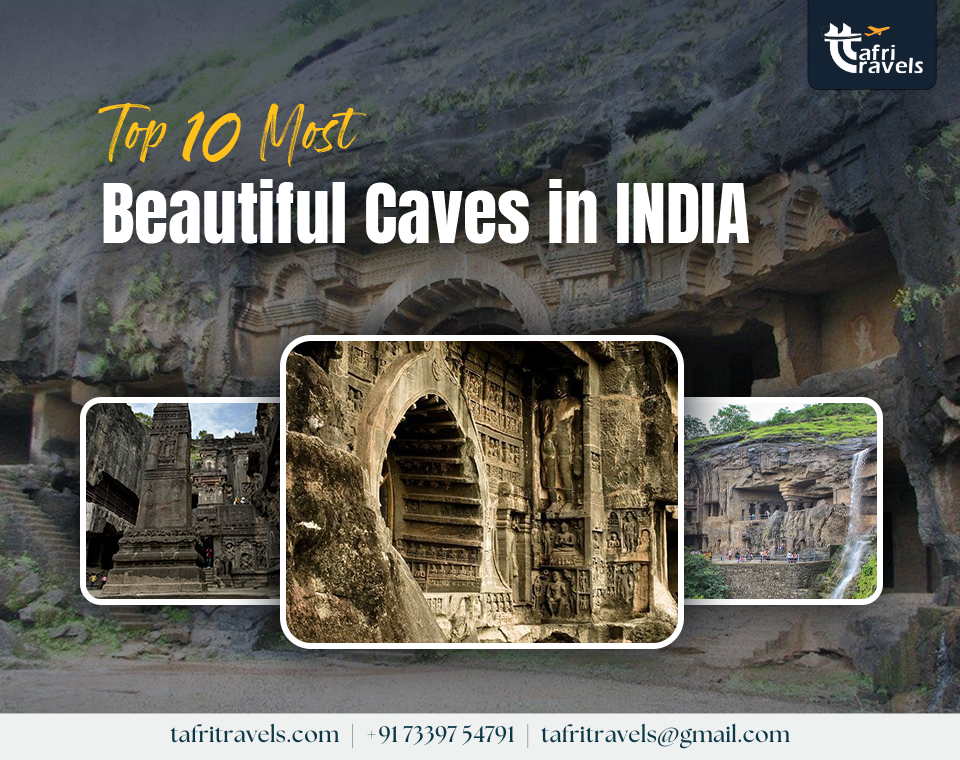
Top 10 Most Beautiful Caves in India in 2025
In India there are lots of top caves are there in which being one of the most ancient civilizations in the world, India harbors many age-old wonders more than most other lands. Mystical, allusive, and magnificent that is hidden inside the forests and valleys of India are ancient caves that are like buried treasure in this vast country, to visit the natural caves in India but still unexplored and mysterious. Here most of the natural caves in India are Hindu, Jain, and Buddhist cave temples. Apart from religious importance, these historical caves are recognized for their extraordinary sculptures dating back to prehistoric times. Although there are many caves in India, that seem unexplored. Tafri Travel is the best platform where we will all the required information for the places that we want to explore. Ancient caves in India allow us to visit them sequentially.
Table of Contents
ToggleList of Top Most Beautiful Caves in India in 2025
Here are the top most beautiful caves in India in 2025 that you must explore for their breathtaking beauty, historical significance, and architectural marvels:
1. Ajanta Caves – The Ancient Buddhist Marvel
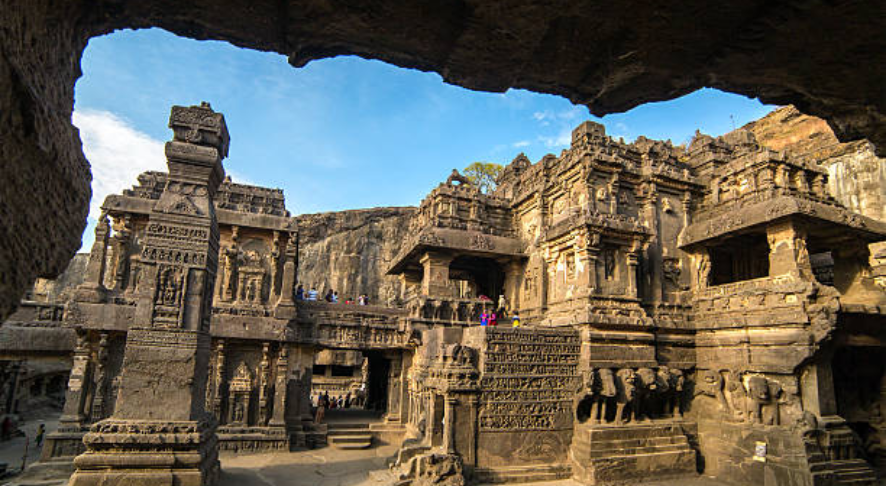
These are the most famous caves that are rock-cut Ajanta and Ellora caves near Aurangabad, carved out of basalt and granite cliffs in the Western Ghats. The 29 rock-cut caves at Ajanta in a horseshoe arc on the cliff, since the 2nd century BC and 6th century AD are Buddhist with worship viharas, while in Ellora there are 34 Hindu, Jain, and Buddhist caves and also there are both chaityas and viharas, with living quarters, kitchens, sleeping quarters. The largest here is the Kailasa temple or Cave 16 which ranged for over two km along the basalt cliff, with southern influences in its architecture due to Chalukya and Pallava artisans included in the construction.
- How to reach: Well-connected by roadways from Aurangabad and Jalgaon
- Best Time to Visit: November to March
- Major Nearby Attractions: Fardapur village, Galwada, Lorun, Shri Siddeshwar Provision.
2. Ellora Caves – The Architectural Wonder
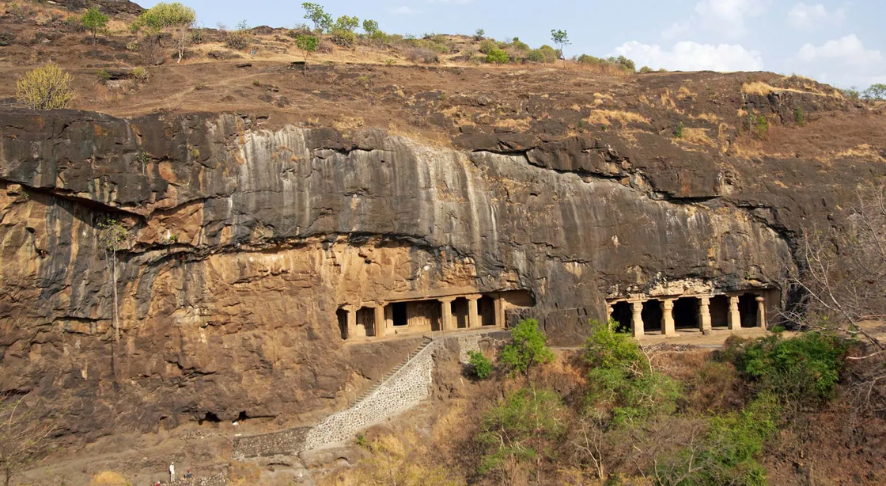
The Ellora Caves, a UNESCO World Heritage Site which is situated near Aurangabad, India, are a remarkable complex of rock-cut temples, and chapels, showcasing the artistic brilliance of Buddhist, Hindu, and Jain monks from the 6th to 10th centuries. The caves are a unique blend of Buddhist, Hindu, and Jain religious art, reflecting the spirit of tolerance in past and ancient times in India. The majority of Buddhists exist in these caves while the latter display a mixture of Jain, Hindu, and Buddhist influences. These caves have some enchanting sculptures that we should not miss. The Kailasha/Kailashanatha temple is situated in the Ellora caves and is the largest cave temple which is a fascinating monolith that has been carved from just one rock in shape.
- How to reach: Well-connected by roadways from Aurangabad.
- Best Time to Visit: October to March
- Major Nearby Attractions: Waghora Waterfall, Buddhis Temple View, Shri Grishneshwar Jyotirlinga Temple, TalyachiWadi
3. Elephanta Caves – The Island Mystery

This cave is popularly known as Gharapuri, the Elephanta Caves are among the popular caves of Maharashtra. These rock-cut caves, located 7 km off the coast of Mumbai, boast the sculptures of Shiva in various forms, such as Vamadeva, Nataraja, Kalyanasundara, Andhakasura Vadha, and Sapta Matrikas. that is at the distance of only 10 km away from Mumbai, this UNESCO World Heritage site promises to give us an overwhelming experience on our visit. The main cave itself covers Gun Hill on the fabulous Elephanta Island and has delightful Lord Shiva sculptures along with panels showing the stages of life for an ascetic and many more things.
- How to reach: Accessible by ferry from Gateway of India, Mumbai.
- Best Time to Visit: November to March
- Major Nearby Attractions: Nhava Talav, Nhavakhadi, Juna Sheva, JNPT Rd.
4. Badami Caves – The Rock-Cut Temples
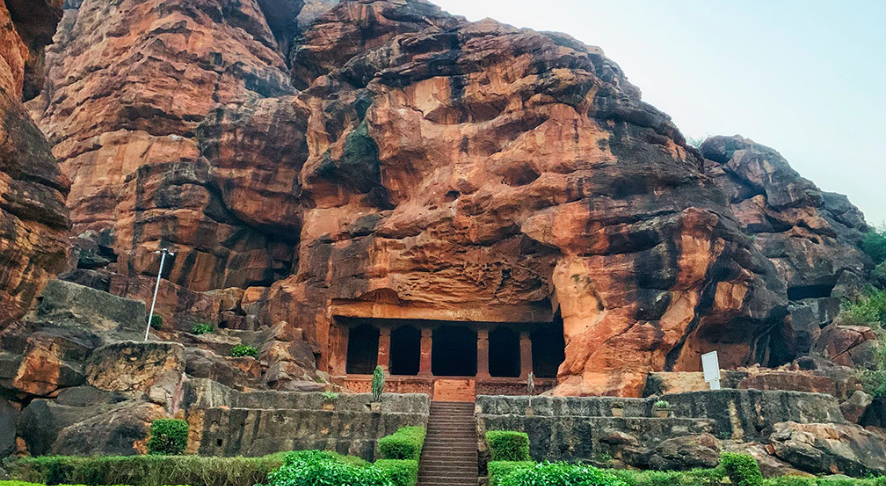
These are the most beautiful caves that are across all ancient places in India which are scattered ancient, natural, and man-made caves in valleys hills, and forests, examples of structural or civil engineering and historical craftsmanship many of these caves have extraordinary sculptures and carvings dating back to pre-historic times as they have religious significance for Jains, Hindus, and Buddhists. Most of the talented artisans carried design elements from wood in rock-cut temples to imitate the texture and grain where many religions and their followers liked the isolation that these natural caves and grottos provided. to pick out some of the spectacular caves to visit across the country. This is among the most beautiful caves in India.
- How to reach: Well-connected by roadways from Lonavala and Pune
- Best Time to Visit: October to March
- Major Nearby Attractions: Malavali Waterfall, Bhaje Waterfall, Fort Hill View, Visapur Fort.
5. Borra Caves – A Natural Limestone Beauty
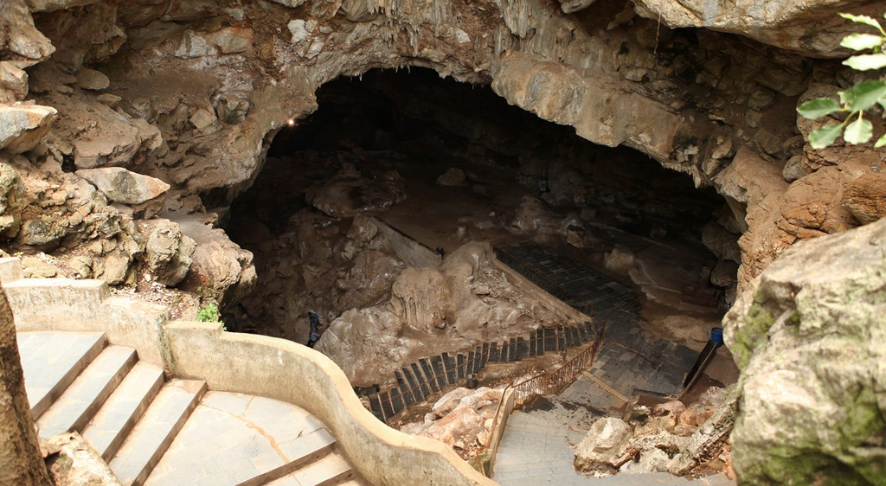
This cave is located in the Anatagiri Hills of the Araku valley in Visakhapatnam, standing the Borra Caves and the presence of a naturally formed Shiva Lingam here makes these caves vulnerable to the tribal people inhabiting the villages around the caves that spread across an area of 1 square km, Borra Caves are full of stalagmite and stalactite formations. Borra Cave comes in the category of natural cave in India, formed by the dipping of streams on limestone rock clusters. The cave is situated on the way to Araku Valley and depicts amazing features of karst and topography like stalactite, stalagmite, halite, and pillars. This Indian cave comprises formations of a variety of things like Shiva Linga, Parvathi, Mother Child, and Human Brain.
- How to reach: travel to Visakhapatnam, then take a train or bus to Araku Valley and take a local transport to Borra Caves
- Best Time to Visit: October to March
- Major Nearby Attractions: Araku valley, kaiki waterfalls, and Coffee museum.
For Free Consultation
Contact Number: +91 8107871710
Email: tafritravels@gmail.com
6. Amarnath Caves – The Sacred Pilgrimage

This cave is located in Jammu and Kashmir and is one of the most popular Hindu shrines. The shrine is dedicated towards our god to the God Shiva, claimed to be over 5,000 years old, and forms an important part of ancient Hindu mythology. The cave is situated at a height of 3,888 meters and about 141 km from Srinagar, the capital of Jammu and Kashmir. The main Amarnath cave has an ice stalagmite that resembles the Shiva Linga which changes expands and contracts with the rotating cycle of the atmosphere. According to Hindu mythology, this is the cave where Shiva explained the secret of life and eternity to his divine consort our goddess Parvati. Apart from these, this is the most historic cave in India.
- How to reach: the nearest station is Jammu, which is 178 km away.
- Best Time to Visit: October to March
- Major Nearby Attractions: mart and sun temple, Aru valley, and Surya temple.
7. Siju Caves – The Bat Cave of India
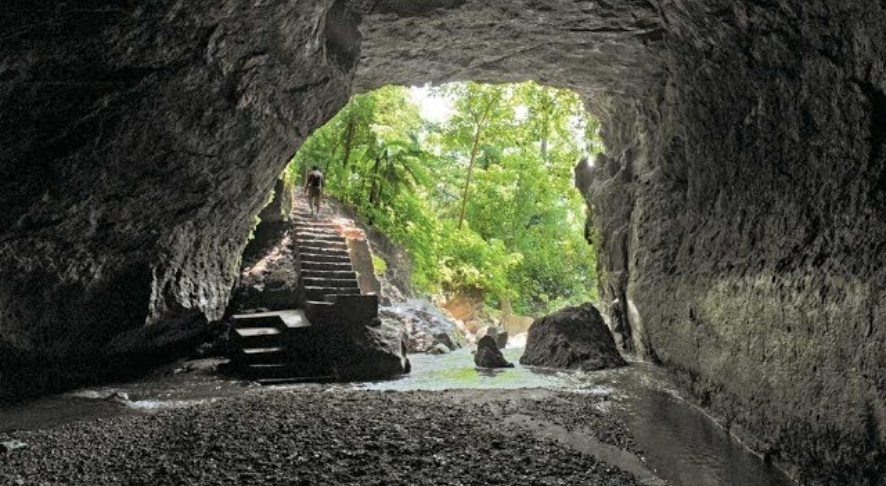
This beautiful cave also known as Siju Cave or Bat Cave in English, is one of the most well-known and significant caves in India It is situated in the Garo Hills that is situated in the North East Indian state of Meghalaya, across the Napak Lake and the Simsang River game reserve. The Siju Dobakkol is home to tens of thousands of bats, and holds great significance in the field of speleology, being one of the most thoroughly researched caves in the Indian subcontinent. The ancient caves in India are the Chopra of the Indian Museum, Calcutta that is a part of an interdisciplinary research project. This project made Siju Cave one of the best-explored cave systems in the Indian subcontinent at that time. This is the most beautiful caves in India.
- How to reach: We can travel to the Garo Hills, specifically near Napak Lake.
- Best Time to Visit: October to March
- Major Nearby Attractions: Baghmara, tura, and williamnagar.
8. Edakkal Caves – Prehistoric Rock Carvings

These caves are two natural caves at a remote location at Edakkal, which is at a distance of 25 km from Kalpetta in the Wayanad district of Kerala in India. They lie 1,200 m in height and above sea level on Ambukutty Mala, located near an ancient trade route connecting the high mountains of Mysore to the ports of the Malabar Coast that roll inside the caves are paintings believed to date to at least 6,000 BCE, from the Neolithic man, indicating the presence of a prehistoric settlement in this region. The carvings are of human and animal figures, tools used by humans, and symbols yet to be deciphered, suggesting the presence of a prehistoric settlement in the top caves in India.
- How to reach: We can fly to Kozhikode (Calicut) Airport (CCJ), then travel to Kalpetta in Wayanad.
- Best Time to Visit: November to March
- Major Nearby Attractions: Chembra Peak, Banasura Sagar Dam, Soochipara Falls, and Meenmutty Falls.
9. Krem Liat Prah – India’s Longest Cave
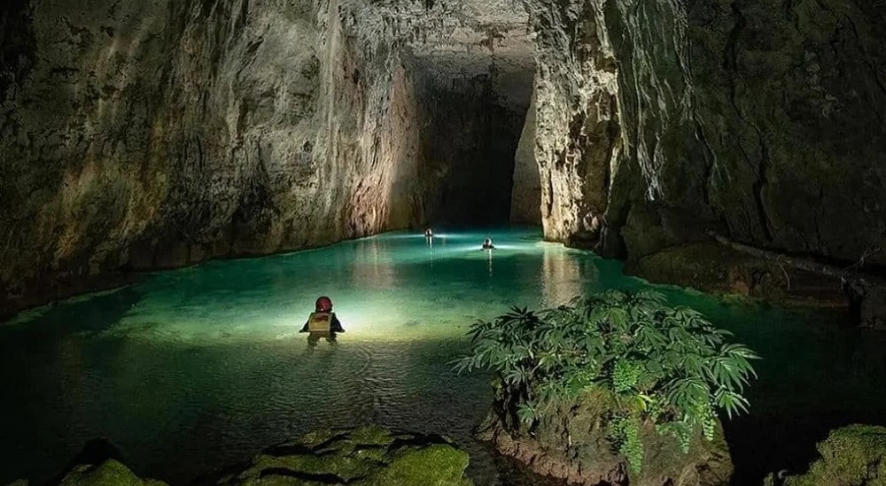
This place is situated in the Jaintia Hills district of the State of Meghalaya, which is trucked in the folds of the Shnongrim Ridge, Krem Liat Prah is the longest natural cave in India which is one among the 150 caves known caves of the ridge and parts of it remain unexplored by many people. The cave has been estimated to be about 34 kilometers long and continues to extend with the ongoing surveys. These are the natural caves in India where we can go and explore with our loved ones and enjoy the historic view of other places that give a warm and pleasant touch to our eyes and refresh our souls.
- How to reach: we can travel from Shillong or Jowai
- Best Time to Visit: October to April
- Major Nearby Attractions: Mawphlang Sacred Forest, Sweet Falls, and the vibrant Police Bazar.
10. Belum Caves – The Second Longest Caves in India
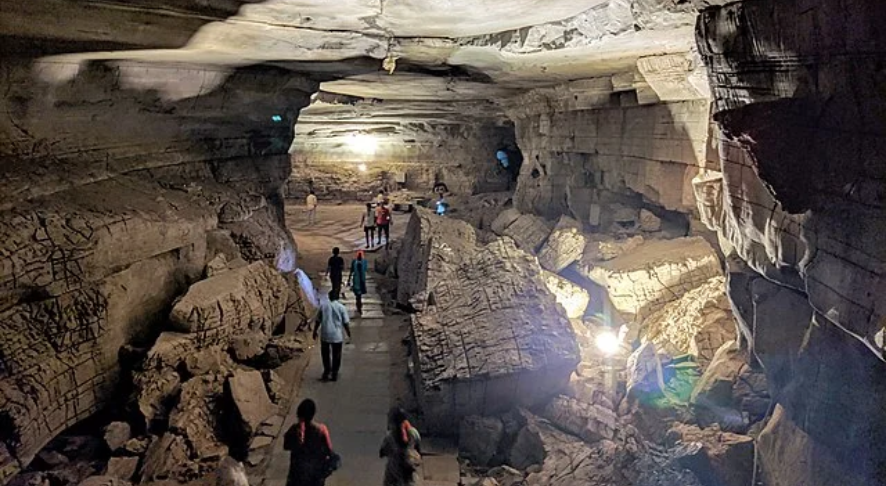
This cave is halfway between Bengaluru in Karnataka and Hyderabad in Telangana, is the spectacular Belum Caves with stalactites, and black limestone, which were occupied by Jain and Buddhist monks centuries ago when they stretched for over 10500 feet, with 16 pathways, and are some of India’s longest cave networks. The cave system was formed by the flow of an underground river and though the caves were known to locals, they were brought to public attention by British geologist and archaeologist Robert Bruce Foote, with stalactite formations that look like Shiva lingas, a meditation hall with a rock pillow, a cave with thousand hoods that look like the hoods a musical chamber where stalactites produce musical sounds. This is the top caves in India that we have ever seen.
- How to reach: We can fly to Bengaluru and drive from there which is about 300 km.
- Best Time to Visit: October to February
- Major Nearby Attractions: mahanandi , ganagamm temples, and gandikota fort.
Top Offbeat Places to Visit in Udaipur with Tafri Travels!
Conclusion
Ancient and historical Caves have always attracted historians, scientists, and tourists people. These caves are mesmerizing to understand the architectural brilliance that man achieved in prehistoric times devoid of any modern technology. Many of the Indian caves are also recognized as a UNESCO world heritage site because we can’t miss visiting these ancient caves, the next time we tour and travel in the following state. These past ancient caves promise more than sheer exhilaration and adventure they bring oodles of peace, happiness, tranquillity, and spiritual bliss in most cases and give us the beauty that we can enjoy with our loved ones.
FREQUENTLY ASKED QUESTIONS
1. Which are the most beautiful caves in India?
Ans: Some of the most stunning caves in India include Ajanta & Ellora Caves (Maharashtra), Elephanta Caves (Maharashtra), Badami Caves (Karnataka), Borra Caves (Andhra Pradesh), Amarnath Cave (Jammu & Kashmir), and Meghalaya’s Mawsmai Caves.
2. Which is the oldest cave in India?
Ans: The Bhimbetka Rock Shelters (Madhya Pradesh) are among the oldest, dating back to prehistoric times, while the Ajanta Caves (Maharashtra) are some of the earliest Buddhist cave structures, built around the 2nd century BCE.
3. What makes Ajanta and Ellora Caves so special?
Ans: These UNESCO World Heritage Sites are famous for their intricate carvings, Buddhist frescoes, and Hindu & Jain sculptures. The Kailasa Temple in Ellora is a massive rock-cut structure dedicated to Lord Shiva.
4. Which caves in India are best for adventure lovers?
Ans: Borra Caves (Andhra Pradesh), Mawsmai Caves & Siju Caves (Meghalaya), and Belum Caves (Andhra Pradesh) are great for adventure seekers due to their narrow passages, stalactite formations, and underground water streams.
5. Which is the most mysterious cave in India?
Ans: The Amarnath Cave (Jammu & Kashmir) is considered mysterious and sacred, as it houses a naturally forming Shivling made of ice, which waxes and wanes with the moon cycles.
6. Are there any Jain caves in India?
Ans: Yes, several Jain caves exist, with the most famous being in Ellora (Cave 30-34), Badami (Cave 4), and Udayagiri-Khandagiri Caves (Odisha), showcasing intricate carvings of Jain Tirthankaras.
7. Which cave temples are still active for worship?
Ans: The Elephanta Caves (Maharashtra), Badami Caves (Karnataka), and Amarnath Cave (Jammu & Kashmir) are still used for religious purposes and attract thousands of devotees.
8. What is the best time to visit Indian caves?
Ans: Winter (October to March) is the best time to explore caves, as the weather remains pleasant. Some caves, like Amarnath, are only accessible during specific months (July-August).
9. Are these caves easily accessible for tourists?
Ans: Most famous caves like Ajanta, Ellora, Elephanta, and Badami are well-connected by roads and easily accessible. However, adventure caves like Borra Caves and Mawsmai Caves require some trekking.
10. Which caves in India are known for their rock-cut architecture?
Ans: Ajanta, Ellora, Elephanta, Badami, and Karla Caves are renowned for their stunning rock-cut sculptures, Buddhist stupas, and ancient temple carvings.
All Categories
